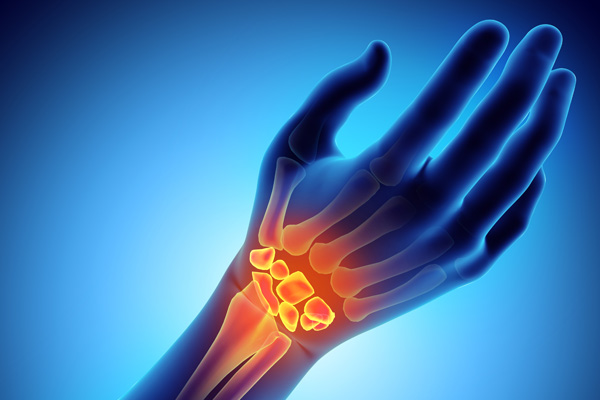| What is Chronic Wrist Ligament Instability?21 August 2017 | Eugene The wrist is the most complex joint of the body, so it is naturally prone to more issues than any other area. It is made up of a platform of two bones on the end of the radial and ulnar bones, linked to a collection of ligaments which are responsible for all wrist movements, and are heavily linked to most movements of the hands. Problems can arise due to the wear and tear of these ligaments over time, leading to an increased risk of chronic instability developing as the person ages. What is Chronic Wrist Ligament Instability?Chronic Wrist Ligament Instability, also known simply as carpal instability, occurs when the small bones in the wrist become displaced from their original position, eventually leading to a decrease in overall joint function. All joints require ligaments in order to maintain stability when loaded by the natural pressures of use, particularly when the joint is used heavily. For the wrist, this stability is especially important due to the complexity of the joint and its inherently large range of movement. When the ligaments begin to break down and fail, it leads to the bones of the joint beginning to move abnormally relative to one another, leading to a general feeling of instability that can be difficult to overcome. Types of Chronic Wrist Ligament InstabilityChronic Wrist Ligament Instability is a far-reaching term that applies to the onset, or combination, of a number of different conditions. To help with narrowing down a diagnosis, there are four major types of carpal diagnosis that are typically classified, each with different effects and treatments. These are usually diagnosed through radiography, and include:
What Causes Chronic Wrist Ligament Instability?Once the ligaments of the wrist are compromised, the abnormal movement of the bones can cause an excess of wear and tear in the area. Particularly, the articular cartilage lining the bones will become damaged, which can lead to a wide range of symptoms and conditions, including arthritis, and a general feeling of pain and instability. Instability can also occur due to a sudden tear of the carpal ligaments, or when the bones are fractured, or heavily affected by arthritis. Symptoms of Chronic Wrist Ligament InstabilitySince Chronic Wrist Ligament Instability is such a widely defined condition that affects such a large network of ligaments and cartilage, the symptoms are fairly general in scope. It can cause ongoing pain due to abnormal stresses on the remaining ligaments, as well as a loss of range of motion and a feeling of stiffness. The most common symptoms include:
Treatment of Chronic Wrist Ligament InstabilityTreatments of Chronic Wrist Ligament Instability are selected based on the severity and location of your condition, which should be diagnosed by your physician through radiology. The first step of treatment is to modify activity, and temporarily stop any movements that cause excess pain. After that, anti-inflammatory pain medications should be used, which can be applied topically or taken orally. If your physician deems the severity of your condition as insufficient for surgery, a wrist splint can be used to prevent any damaging movements, and limit the range of motion in the area while it heals. Splints and Supports for Chronic Wrist Ligament InstabilityAt WristSupports.co.uk, we have a wide range of splints, supports and braces to support your wrist while it heals. These can both protect your wrist from painful impacts and prevent movements that may cause pain and lengthen your recovery process. To view our entire range of supports for Chronic Wrist Ligament Instability, click the yellow button below. Do you have a question to ask or something to add? Why not leave us a comment below or find us on Facebook or Twitter. |
FREE UK DELIVERYon orders of £40 and over. EXPERT CUSTOMER SUPPORTRead our reviews. EASY PRODUCT RETURNSwith our 30 day returns policy. |

